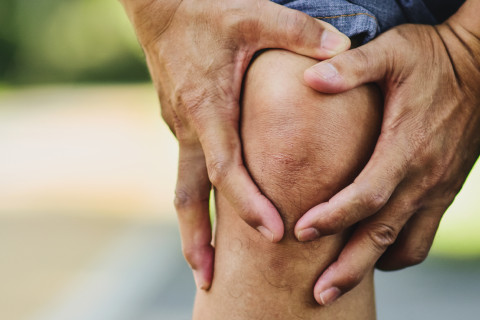The doctoral dissertation in the field of Applied Physics will be examined at the Faculty of Science and Forestry, Kuopio Campus and online.
What is the topic of your doctoral research? Why is it important to study the topic?
The topic of my doctoral research is knee osteoarthritis. Osteoarthritis (OA) is a joint disease that affects over 40 million Europeans. It is characterized by the progressive and irreversible deterioration of articular cartilage and the subchondral bone. This disease decreases the patient’s quality of life with substantial pain, joint stiffness, and loss of mobility. Post-traumatic osteoarthritis (PTOA) is the most common type of OA that occurs due to damage to the articular tissues. Although a broad spectrum of recognized risk factors has been identified, finding the direct relationship between the potential risk factors and the events leading to PTOA in the long term is challenging. To prevent or slow down cartilage breakdown, the degradation mechanisms must be understood, and ways to predict the disease progression must be found.
Therefore, my thesis consists of two parts. In the first part, we monitored the OA progression of artificial cartilage defects and their impact on the joint in an equine carpal groove model using various in vivo and in vitro modalities. In addition, we evaluated the capability of the novel contrast enhance CT method to detect chondral lesions and simultaneously evaluate the degenerative state of the articular cartilage. In the second part, we developed and applied a computational modeling approach to characterize and understand the mechanisms behind tissue alterations.
What are the key findings or observations of your doctoral research?
For the first time, structural, compositional, and functional effects of blunt and sharp cartilage damages on the joint were evaluated using various in vivo and in vitro. Therefore, novel and valuable information regarding the effect of lesion on injured tissue and joint were obtained in this thesis. Following that, the developed computational modeling approaches showed significant capability for finding the mechanisms behind tissue alterations.
The key findings of my thesis can be summarized into five main points.1) In joint-level evaluation, the overall effect of cartilage lesions on joint homeostasis and clinical presentation (radiology images) is limited. 2) In the tissue level evaluation, sharp and blunt grooves, particularly blunt grooves, gave rise to severe degeneration close to the grooved sites and mild degeneration at the more remote sites from the grooves. More importantly, at the cartilages opposite to the grooves, the superficial proteoglycan loss and decrease of mechanical properties over the 9-month follow-up period were found. 3) The novel dual-CECT methodology can effectively detect chondral lesions and simultaneously evaluate the degenerative state of the articular cartilage. Moreover, images obtained using this approach have great potential for tissue segmentation needed in computational modeling. 4) Musculoskeletal modelling approach demonstrated its potential in finding the mechanisms behind tissue alterations. Following surgery, ACL reconstructed patients experience knee joint underloading and deleterious cartilage changes. 5) Rapid atlas-based finite element modeling approach was able to provide a new methodology for the analysis of knee joint and cartilage mechanics based on the measurement of bone dimensions from native CT scans.
How can the results of your doctoral research be utilised in practice?
The improved understanding of OA, in parallel with developing computational methodology, could help identify potential risk factors, which will be beneficial in establishing more accurate and practical approaches for diagnosing, preventing, and predicting OA. In particular, the rapid modeling approach, such as atlas-based modeling, combined with the verified degeneration algorithms, could provide a fast and reliable clinical tool for OA prediction and the simulation of interventions. Ultimately, this type of personalized medicine could even lead to better treatment outcomes for patients at high risk of developing OA.
The new information obtained in all five studies in this thesis is essential for achieving this goal. The comprehensive results from this thesis on the natural progression of chondral grooves provide a benchmark for (long-term) repair studies that use similar chondral defect models.
What are the key research methods and materials used in your doctoral research?
The doctoral research utilized a unique set of data obtained from our collaborator Utrecht University. Various measurements have been conducted on this data set, including radiography and micro-CT imaging, biomechanical testing, microscopical measurement, and analysis of synovial fluid samples. Part of these measurements has been conducted at Utrecht University. In the modeling part, valuable data were obtained from UCSF and the University of Oulu. The data included MR Images, CT images, and motion-captured data. Also, musculoskeletal and finite element simulations were used to acquire joint forces and stresses.
The doctoral dissertation of Ali Mohammadi, MSc, entitled Characterization, imaging and computational modeling of joint and articular cartilage injuries, will be examined at the Faculty of Science and Forestry. The Opponent will be Associate Professor, Ara Nazarian, Harvard Medical School, and the Custos will be Professor Rami Korhonen, University of Eastern Finland. Language of the public defence is English.
For more information, please contact:
Ali Mohammadi, [email protected], tel. 050 341 4759
- Public examination online (coming)
- Dissertation book online
- Photo available for download



